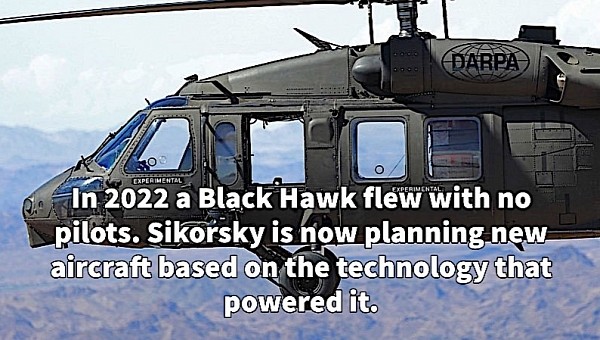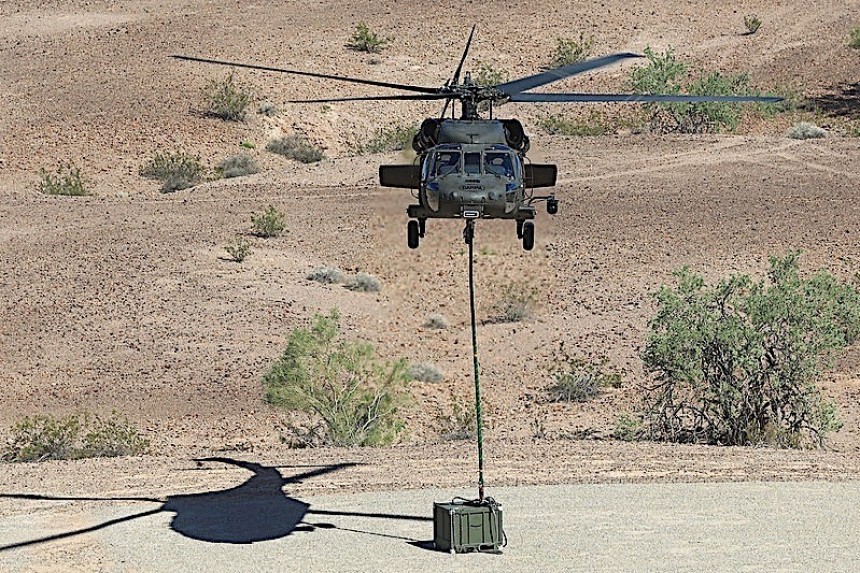We’re used by now to seeing autonomous cars, at least to some degree, roam the roads of our countries. Soon enough though, we’ll have to get used to seeing autonomous aircraft, be they military or civilian, do the same thing.
Sure, one could argue modern-day airplanes are as autonomous as they get, because their autopilots manage most of a flight’s stages. But do try and remember that these things always have human pilots on board, and it is exactly this element efforts currently being made are trying to eliminate.
At the end of last, year the world learned of an incredible achievement in this field. Back then, a Black Hawk helicopter was flown with no pilots in the cockpit, performing a series of mock logistics and rescue missions.
The helicopter involved in these tests, which were conducted by DARPA, was running a system called Matrix. That’s a suite comprising hardware and software developed by Sikorsky that’s been in the works over on the helicopter maker for a while now. It is also deployed on something called SARA – short for Sikorsky Autonomy Research Aircraft - a modified S-76B helicopter designed specifically to test and finetune the Matrix.
And now the system has been announced as the backbone of a new breed of aircraft Sikorsky plans on making. That would be hybrid-electric vertical-take-off-and-landing (eVTOL) machines which will be used to serve the needs of both the military and civilians.
The project was just announced this week by the company, and it will at first see the creation of a prototype eVTOL. It’s called, for now, the Hybrid-Electric Demonstrator (HEX), and we already know the first details regarding it.
As said, the first and most important thing is that HEX will be autonomous, and will use the Matrix to be so. It’s unclear what the exact capabilities will be, but they’ll probably cover all aspects of an eVTOL’s operation, from take-off and landing to cruising and hover.
The HEX will have a maximum gross weight in excess of 7,000 pounds (3,175 kg), which is about half the weight of a Black Hawk. The hybrid-electric system that will drive it will comprise, first and foremost, a GE Aerospace-supplied CT7 turboshaft engine, the same kind that’s presently in use in several Bell, Sikorsky, and AgustaWestland helicopters. It will work together with a 1MW-class generator the likes of which GE is currently testing for the U.S. Army and NASA.
With these things on, the prototype should be capable of covering a distance of 575 miles (925 km), but no info on potential top speed was provided.
The HEX prototype will not be used solely to test Matrix and the powertrain, but also the design of future larger aircraft and their control architectures. It’s not yet clear when work on the HEX will begin, and even less so when it comes to when we are to expect a first flight, but we'll update as soon as we learn more.
At the end of last, year the world learned of an incredible achievement in this field. Back then, a Black Hawk helicopter was flown with no pilots in the cockpit, performing a series of mock logistics and rescue missions.
The helicopter involved in these tests, which were conducted by DARPA, was running a system called Matrix. That’s a suite comprising hardware and software developed by Sikorsky that’s been in the works over on the helicopter maker for a while now. It is also deployed on something called SARA – short for Sikorsky Autonomy Research Aircraft - a modified S-76B helicopter designed specifically to test and finetune the Matrix.
And now the system has been announced as the backbone of a new breed of aircraft Sikorsky plans on making. That would be hybrid-electric vertical-take-off-and-landing (eVTOL) machines which will be used to serve the needs of both the military and civilians.
As said, the first and most important thing is that HEX will be autonomous, and will use the Matrix to be so. It’s unclear what the exact capabilities will be, but they’ll probably cover all aspects of an eVTOL’s operation, from take-off and landing to cruising and hover.
The HEX will have a maximum gross weight in excess of 7,000 pounds (3,175 kg), which is about half the weight of a Black Hawk. The hybrid-electric system that will drive it will comprise, first and foremost, a GE Aerospace-supplied CT7 turboshaft engine, the same kind that’s presently in use in several Bell, Sikorsky, and AgustaWestland helicopters. It will work together with a 1MW-class generator the likes of which GE is currently testing for the U.S. Army and NASA.
With these things on, the prototype should be capable of covering a distance of 575 miles (925 km), but no info on potential top speed was provided.
The HEX prototype will not be used solely to test Matrix and the powertrain, but also the design of future larger aircraft and their control architectures. It’s not yet clear when work on the HEX will begin, and even less so when it comes to when we are to expect a first flight, but we'll update as soon as we learn more.











